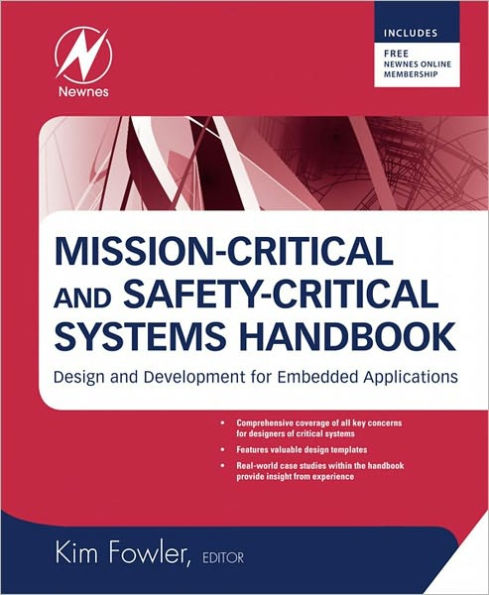Mission-Critical and Safety-Critical Systems Handbook: Design and Development for Embedded Applications
This handbook provides a consolidated, comprehensive information resource for engineers working with mission and safety critical systems. Principles, regulations, and processes common to all critical design projects are introduced in the opening chapters. Expert contributors then offer development models, process templates, and documentation guidelines from their own core critical applications fields: medical, aerospace, and military. Readers will gain in-depth knowledge of how to avoid common pitfalls and meet even the strictest certification standards. Particular emphasis is placed on best practices, design tradeoffs, and testing procedures. - Comprehensive coverage of all key concerns for designers of critical systems including standards compliance, verification and validation, and design tradeoffs - Real-world case studies contained within these pages provide insight from experience
1100697987
Mission-Critical and Safety-Critical Systems Handbook: Design and Development for Embedded Applications
This handbook provides a consolidated, comprehensive information resource for engineers working with mission and safety critical systems. Principles, regulations, and processes common to all critical design projects are introduced in the opening chapters. Expert contributors then offer development models, process templates, and documentation guidelines from their own core critical applications fields: medical, aerospace, and military. Readers will gain in-depth knowledge of how to avoid common pitfalls and meet even the strictest certification standards. Particular emphasis is placed on best practices, design tradeoffs, and testing procedures. - Comprehensive coverage of all key concerns for designers of critical systems including standards compliance, verification and validation, and design tradeoffs - Real-world case studies contained within these pages provide insight from experience
106.95
In Stock
5
1

Mission-Critical and Safety-Critical Systems Handbook: Design and Development for Embedded Applications
592
Mission-Critical and Safety-Critical Systems Handbook: Design and Development for Embedded Applications
592
106.95
In Stock

Product Details
| ISBN-13: | 9780080942551 |
|---|---|
| Publisher: | Butterworth-Heinemann |
| Publication date: | 11/19/2009 |
| Sold by: | Barnes & Noble |
| Format: | eBook |
| Pages: | 592 |
| File size: | 6 MB |
About the Author
What People are Saying About This
From the B&N Reads Blog
